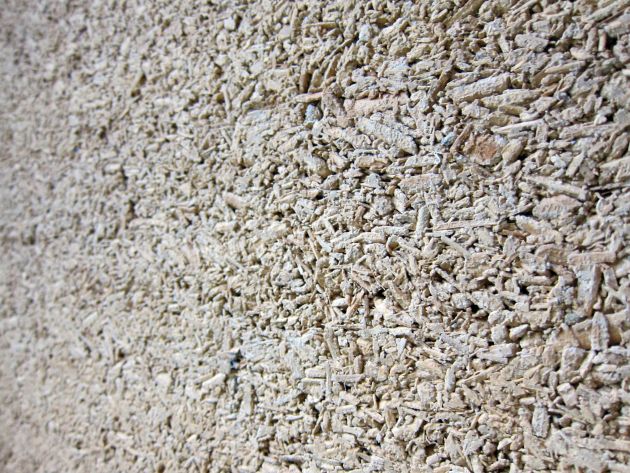 Hempcrete. Photo by Jnzl via Flickr
Hempcrete. Photo by Jnzl via Flickr
Hempcrete is a biocomposite material that can be used in the place of concrete. It has a negative carbon footprint.
Hempcrete is a biocomposite material that can be used for construction and insulation. It is made with lime and hemp, but is easier to work with than traditional lime mixes. It lacks the brittleness of concrete, and so doesn’t need expansion joints. It is also lightweight, and works well for insulation as it effectively retains heat in colder months. Hempcrete walls are fireproof, transmit humidity and resist mould. It also performs well for acoustic needs.
Most interestingly for the architecture and construction industry, hempcrete is a carbon-negative material. When hemp grows, it absorbs CO2 from the atmosphere, and as lime is cured and turns to limestone it also absorbs carbon dioxide. Hempcrete locks away more carbon than is produced in its manufacturing, and is therefore a highly sustainable option. Buildings that employ hempcrete are thought of as healthy, as they don’t use chemicals and are free of damp.
The material is growing in popularity as the architecture and building industries try to adapt to take into consideration the climate crisis and the impact of materials and design.
Hempcrete is also very useful for areas at risk of seismic activity. It is increasingly used in earthquake prone areas because it is low density and doesn’t crack under movement. Another material must be used to support the vertical load in building construction, and hempcrete is often paired with a structural frame of timber or metal. It can also be used to insulate the roof or the floor, creating a full hempcrete thermal envelop around the building.
Hempcrete was first used in France in 1990s where it has been widely used to renovate old buildings made from stone or lime. It is still popular in France, and has been produced elsewhere in Europe. Since it became legal to grow hemp in certain states of the US in 2018, the possiblity of the material being used in that country has grown significantly.


















